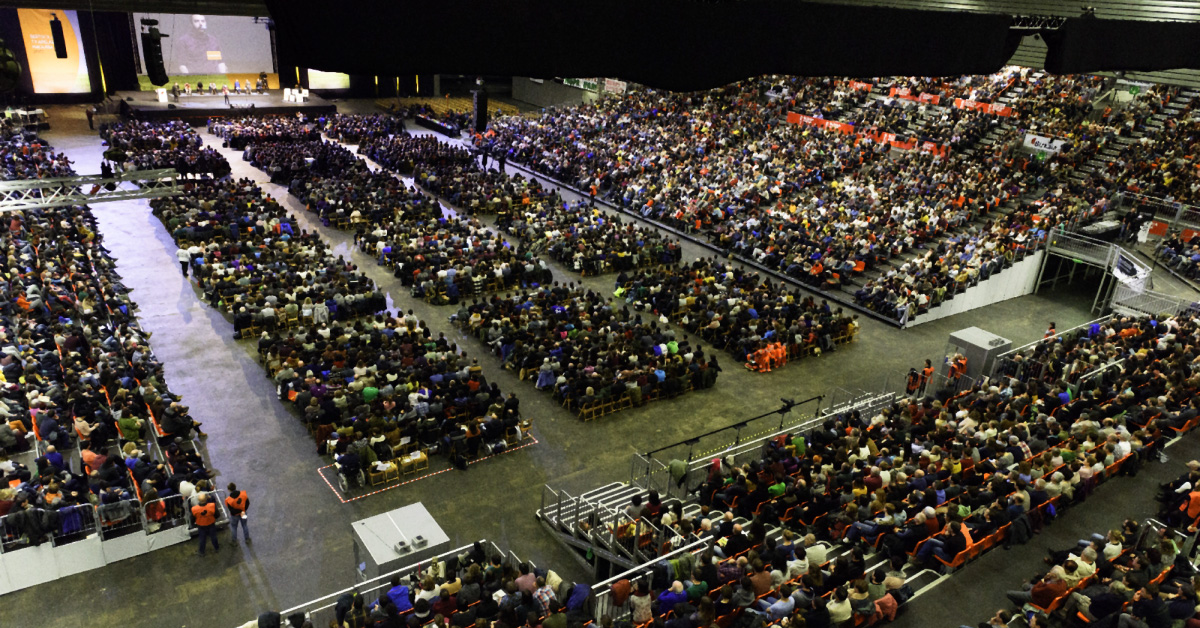Basque ethnography at a glance

Final of the National Bertsolari Championship. Bilbao Exhibition Centre, 2017. Photo credit: Alberto Elosegi. Source: Xenpelar Documentation Centre.
What does the bertso have to catch the public so much? Throughout the world there are several cultures that work with oral improvisation, but none of them has the strength that bertsolaritza has today. Proof of this is the Bertsolaris Championship that is held every four years in the Basque Country –this year it is being held a year late due to the pandemic–. A championship in which, after several play off sessions throughout Euskal Herria, eight bertsolaris usually reach the grand final. These eight improvisers must sing before fourteen thousand listeners more or less, in morning and afternoon performances. Through the media many other listeners follow the act. Experts from all over the world are also approaching a broadcast of this magnitude. But I think the most shocking thing is the almost liturgical silence that occurs before the bertsolaris begin to sing. Those fourteen thousand throats are suddenly silent, completely, to give expression to a single throat. That unique thread of voice, through improvised words in Basque, weaves thousands of hearts in seconds, makes thousands of skins vibrate, moistens thousands of eyes, provokes thousands of laughs… Where is the secret of this magical fact?
The date of creation of bertsolaritza is unknown. Juan Mari Lekuona, in his book Ahozko Literatura, tells us that «the emergence of the bertsolarism must be placed in the pastoral era; and that reflects a preclassic world». In any case, until the fifteenth century we will not have written testimonies of bertsolaritza. Thanks to a prohibition of the old jurisdiction of Biscay (1545) we know that at that time the so-called profazadas improviser women sang bertsos at funerals. We won’t have a next written citation until the early 19th century. By then, the activity of the bertsolaris already had a remarkable force: in 1801, in the Villabona square, around 4,000 spectators gathered to watch the bertso challenge between Zabala from Amezketa and Txabalategi from Hernani.
Since then, the art of improvising in bertso has come a long way to become firmly established in today’s Basque society.
We can say that bertsolaritza has known how to adapt to the new times without giving up its original essence. While in many parts of the world improvisers perform accompanied by musical instruments, our bertsolaris, with the exception of a few special performances, sing a cappella –with or without a microphone– paying homage to homophony. That has practically not changed since ancient times. But on the other hand, bertsolaritza lives looking to the future: transmission is ensured through the bertso schools and the bertsozale association, and many bertso acts are also organized. The championships have also entered this evolutionary path, updating themes, adapting approaches and opening new paths. In addition –and perhaps this is the most important thing–, the young people have taken over from the older ones with enthusiasm and responsibility.
The great bertsolari Xabier Amuriza is the one who best sums up this philosophy, in a beautiful bertso that he created to define bertsolaritza itself: «Sustraiak sakon lehenean baina, geroan luze adarrak» (the roots deeply rooted in the past, but with the branches extending towards the future).
That may be the main key to why current bertsolaritza is so healthy, and one of its consequences could be that amazing ability that bertso shows to gather thousands of people around it.
Joseba Santxo Uriarte – Philologist and researcher

